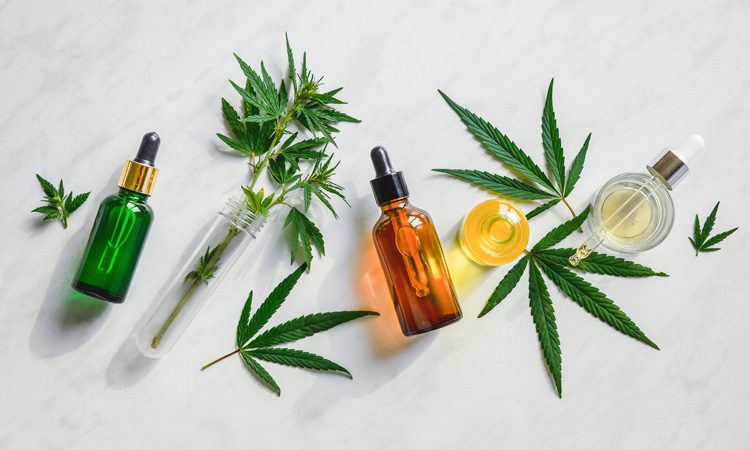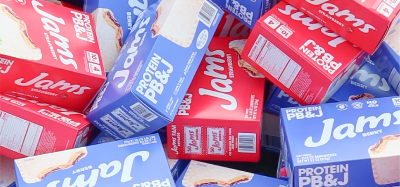The truth behind CBD labels
- Like
- Digg
- Del
- Tumblr
- VKontakte
- Buffer
- Love This
- Odnoklassniki
- Meneame
- Blogger
- Amazon
- Yahoo Mail
- Gmail
- AOL
- Newsvine
- HackerNews
- Evernote
- MySpace
- Mail.ru
- Viadeo
- Line
- Comments
- Yummly
- SMS
- Viber
- Telegram
- Subscribe
- Skype
- Facebook Messenger
- Kakao
- LiveJournal
- Yammer
- Edgar
- Fintel
- Mix
- Instapaper
- Copy Link
Posted: 25 October 2019 | Jaclyn Bowen | 1 comment
If you are considering experimenting with CBD-infused formulations, here Jaclyn Bowen presents three important factors to watch out for to improve systemic quality control.


Clean Label Project is a US non-profit organisation with the mission to bring transparency to consumer product labelling. We recently investigated the contents of America’s best-selling CBD products. Our rationale was clear: it represented a high-growth, premium priced category with a known history of FDA-identified issues regarding potency and purity coupled with numerous media and academic reports1-5 – hence, it warranted scrutiny. Our study’s core findings validated the root cause identified by previous academic and media outlets: the CBD industry has some systemic quality control issues.
Clean Label Project approached its CBD retailer study by simulating the consumer shopping experience, using a range of popular websites and consumer blogs to identify the most popular products in America.
We purchased 208 CBD products ranging from tinctures, to tablets, capsules and gummies (both those targeted at humans as well as animals) from local co-ops, national retailers, pharmacies and e-commerce platforms. Then, using analytical chemistry, the products were tested for heavy metals, pesticide residues, plasticisers (phthalates, BPA and BPS), actual CBD content and actual THC content.
The results revealed three main factors that should be considered: variable CBD content, the presence of THC in THC-free labelled products, and chemical exposure.
Three major findings:
Finding #1: variable CBD content
Of the 208 products purchased, over 75 percent were off by at least 10 percent of the CBD value listed on the label. In other words, of the products that claimed to have 100mg of CBD on the package, 75 percent of them had either less than 90mg or more than 110mg.
While we cannot be certain of how this happens, the hypothesis is that since this industry is still in its infancy, the basic foundations of Good Manufacturing Practices (GMPs) and Hazard Analysis and Critical Control Point (HACCP) are still being recognised. The risk is that the FDA Code of Federal Regulations6 very clearly outlines regulations against false and misleading claims.
The solution
To counter this problem, it is advisable to use a CBD supplier that is vertically integrated and GMP certified. Many CBD suppliers are touting GMP compliance; but make sure you ask for the actual certificate for that additional validation, which assures that they are having a third-party audit and approve their process.
Finding #2: presence of THC in products labelled THC-free
In May of 2019, Consumer Reports7 outlined the story of a man who claimed to not have used marijuana, but that failed a drug test, allegedly from using CBD that contained THC. Unfortunately, this case is not unique. Both Koi8 and Dixie Elixirs9 have also been cited in lawsuits where consumers failed drug tests because of CBD products. According to the 2018 Farm Bill,10 CBD growers must not contain THC in excess of 0.3 percent. Products with THC above 0.3 percent are technically considered marijuana. However, a product cannot be considered THC-free solely on the basis that it does not exceed 0.3 percent THC.
The solution
In the absence of federal regulation governing these claims, brands must define their claims and disclose how it is measured. We advise that you scrutinise your supplier’s Certificates of Analysis. What does the supplier disclose as the level of detection and level of quantification for THC? Make sure to disclose to consumers your brand’s definition of ‘THC-free’. If concerned, consider certification.
Issue #3: chemical exposure
According to an article by Forbes,11 the most common reasons for people using CBD were to treat insomnia, depression, anxiety and joint pain. Forty-two percent of those CBD users questioned said they had stopped using traditional medications such as Tylenol pain relievers, or prescription drugs like Vicodin and had switched to using cannabis instead. These consumers are reaching for CBD due to its claimed therapeutic benefits. However, unbeknown to these consumers, in some cases, they are also exposing themselves to chemicals that are linked to long-term chronic disease like cancer and infertility.
The solution
Broaden and refine your product specifications and your supplier assurance forms. The CBD industry has embraced the use of QR codes and tracking numbers so consumers can see the test results for the products online. The challenge is that the scope of testing, in many cases, is limited to CBD, THC and terpenes testing. Knowing that consumers are concerned about heavy metals, pesticides and plasticisers means that you should align your corporate quality expectations with the expectations of your consumers. If a supplier does not include robust contaminant testing in their Certificate of Analysis, ask for one. Better yet, facilitate that testing yourself.
Do not settle for test results that report in parts per million and cover 12 contaminants. State-of-the-art analytical chemistry laboratories can, in many cases, test confidently down to single digit parts per billion. Also, ask to see the International Standards Organization (ISO) 17025 laboratory accreditation that includes these contaminants in their scope. This is the international best practice for ensuring the competence of testing and calibration laboratories.
References
1. Bonn-Miller MO, Loflin MJE, Thomas BF, Marcu JP, Hyke T, Vandrey R. Labeling Accuracy of Cannabidiol Extracts Sold Online. JAMA. 2017;318(17):1708–1709. doi:10.1001/jama.2017.11909
2. https://www.nbcnewyork.com/…
3. https://www.businessinsider.com/….
4. https://www.nytimes.com/interactive/…
5. https://www.sciencenews.org/article/…
6. https://www.fda.gov/medical-devices/…
7. https://www.consumerreports.org/…
8. https://www.naturalproductsinsider.com/…
9. https://www.denverpost.com/…
10. https://nifa.usda.gov/industrial-hemp
11. https://www.forbes.com/sites/…
About the author
Jaclyn Bowen MPH, MS is the Executive Director of Clean Label Project and a food safety and quality systems engineer. Prior to coming to Clean Label Project, she spent 15 years at the World Health Organization Collaborating Centre, NSF International, working on the creation and enforcement of food safety and water quality standards and compliance systems.
Issue
Related topics
CBD hemp & cannabis, Clean Label, Food Safety, Health & Nutrition, Product Development, Quality analysis & quality control (QA/QC), The consumer










It would be nice to know what percent contained no CBD? AN FDA study said 70% contained no CBD and most of the product that contained CBD was synthetic…